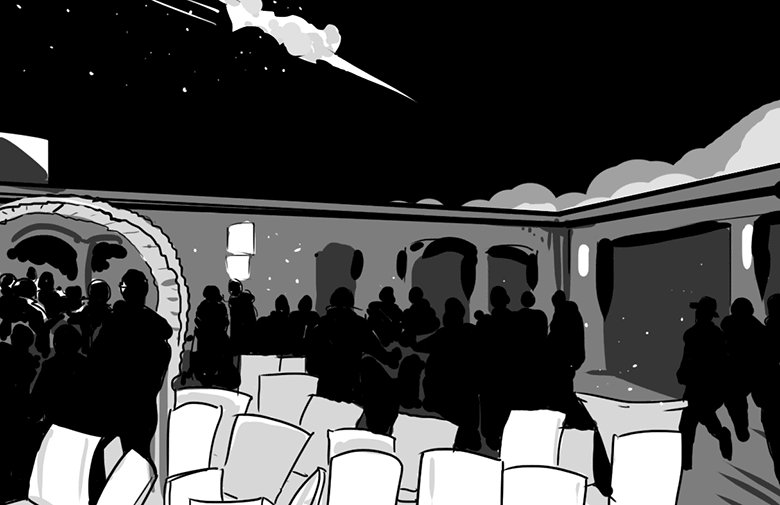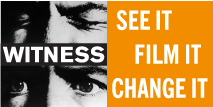Field Notes
Acknowledging the Video’s Source
ABOUT
While in some cases filmers will keep their identity private for security concerns, in most cases, filmers identify themselves and expect to be asked for permission and given credit when their footage is used by others.
Whether the filmer’s identity is public, or the source has requested anonymity or is unknown, sharing relevant information about the source with your audience is important for three main reasons:
- Ethical responsibility to content creators: Whether footage is taken by a citizen journalist or by a professional reporter, photojournalist, or news organization, content creators expect to be credited for their work and, depending on the legal jurisdiction, may have a legal right to control its use and distribution. Also, while many individuals share their personal photos and videos publicly on YouTube or social media, they do not necessarily expect or desire a larger audience that would result from their footage being distributed more widely. The Eyewitness Media Hub, which studies the use of eyewitness media by news outlets, has documented several cases in which citizen journalists have expressed frustration that their footage was used in the news without permission or attribution.
- Transparency: Eyewitness video, by definition, is created by people outside of your organization. They may not be concerned with by objective documentation, and may have political agendas or biases. Your audience deserves to know whose perspective is framing this particular version of events, as that context can be critical to understanding what is—and isn’t—documented, and why. Think of the footage as a quote a source gives to a reporter. The reporter either names the source or, if there are valid reasons to maintain the source’s anonymity, explains those reasons and describes the source’s perspective and why the reporter considers that source credible.
- Chain of Custody: Chain of custody refers to the chronological succession of ownership or custody of the video. Documenting the chain of custody of the footage you curate will help human rights investigators, filmmakers, historians, or others who may be interested in that footage track down the original video. If the footage turns out to be useful for a criminal investigation, for example, having an unbroken chain of custody can be critical in demonstrating that the footage is authentic.
HOW
There are several ways to acknowledge the original filmer and/or uploader of a video. Which you choose depends on what medium you are working in, how much you know about the video, whether you intend to share the entire video or portions of it, or merely report on the information in the video. It also depends on whether there are potential risks involved in revealing the source’s identity. Here are some options:
- Embed or link to the online video uploaded by the original source. In this case, be aware that the link could become invalid at a later date, or the video could be removed or its privacy settings changed.
- State the name of the filmer or organization, and context about who they are (e.g., a political group critical of the ruling party, an independent journalist who contributes to the local paper, a local resident who was at the scene). Describing the video’s source as simply “the Internet” or “YouTube” is neither ethical nor informative attribution.
- If you are unable to determine particular information about the source, or have decided for security or privacy reasons to maintain the source’s anonymity, describe for your audience how the video was found, why you believe it to be authentic, and any relevant unanswered questions you may have about the source.
NOTABLE EXAMPLES
Sharing Unverified Footage
- For a video montage compiling eyewitness footage of human rights issues from around the world, WITNESS included a link in the YouTube video description to a document that lists the URLs of each of the YouTube videos used in the montage. Viewers who want to know more about any particular clip or where it was from can go to the source.
- The YouTube channel, Syrian4all World, adds English descriptions and subtitles to citizen videos of the war in Syria. In the description of each video on the channel, viewers are provided with a link to the original YouTube video.
- The New York Times project, Watching Syria’s War, curates online videos of the war in Syria. The website embeds YouTube videos from various Syrian citizen media channels, and writes context around each video in sections including, “What We Know,” “What We Don’t Know,” and “Other Videos.” For example, in the “What We Don’t Know” section for a video described as showing protesters running from shots fired by Islamic State fighters, it shares the following disclaimer to its audience:
“We do not know t he identities of t he people shown in t his video, nor do we know t he identity or political beliefs of t he cameraman. We cannot see t he gunmen who are firing t he shots heard in t his video, so we cannot verify claims t hat t hey are members of t he Islamic State in Iraq and Syria.”
FROM THE FIELD
Two Different Descriptions of a Video and a Lack of Credit Leaves Viewers Confused
During the war in Gaza in July of 2014, Palestinians and Israelis documented the conflict and shared their footage online. Also widely disseminated was false footage—images filmed in totally different violent conflicts but described as showing the current war in Gaza. These images were intended to incite hatred or violence toward one side of the conflict or the other.
One eyewitness video, showing a rocket interrupt an Israeli wedding, was broadcast on NBC and several other international news outlets, described as taking place in Holon. The same clip was uploaded to the YouTube channel of the Israel Defense Force (IDF), which described the scene as taking place in Ashdod, an Israeli city 20 miles from Holon.
Neither the media nor the IDF explained how the footage was found or who filmed it. Some news outlets credited the video to “Arakeliants Vartan,” but it is unclear who or what that source is. Is that the name of the original filmer? A wedding guest? The online alias of the first person to upload the footage? None of the outlets link to the original source or contain further context with which to understand the video.
Because the video was shared by the propaganda wing of the Israeli military during a violent conflict, one must wonder whether it is authentic or was created and shared to support the IDF’s military campaign. Yet because neither the IDF nor the news outlets provided transparency for viewers, it was impossible for a viewer to determine the true context of the footage.

About This Field Note
This Field Note is from the Using Eyewitness Videos in Human Rights Reporting & Advocacy section of the Video as Evidence Field Guide.
PDF Download
Download ETHICAL GUIDELINES: Using Eyewitness Videos in Human Rights Reporting & Advocacy
Current Field Notes
- Filming Long After a Crime
- Minimizing Harm While Exposing Abuse
- Acknowledging The Video's Source
- Responsibility to the Audience
- The Role of Video in Human Rights Advocacy
- Illustrating How a Perpetrator Can Commit a Crime
- An Effective and Knowledgeable Commander
- A Knowledgable Commander and Failure to Act
- All About Evidence: Ghouta to Bhopal
- The Role of Video in the Criminal Justice Process
